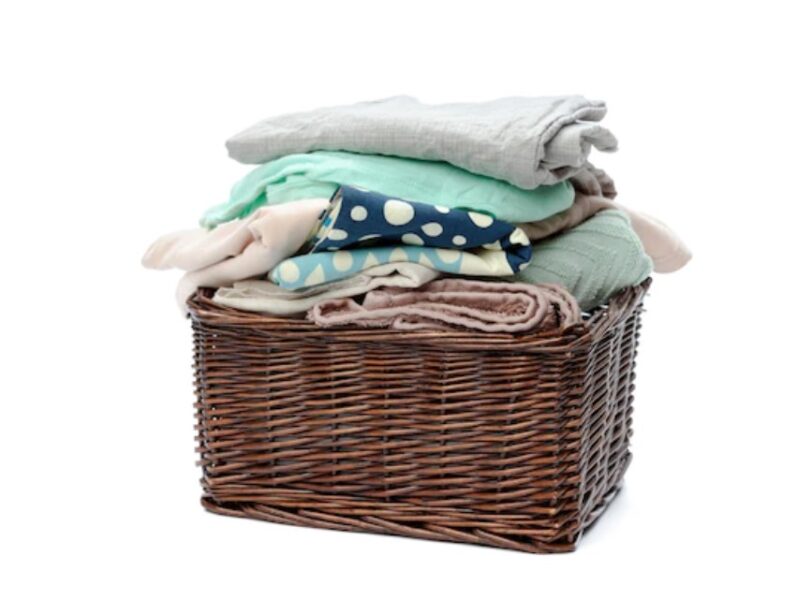

“Buy less, choose well, make it last” – these infamous words of Vivienne Westwood that have forever shaped the sustainable fashion world. According to this quote, the fundamental tenet of sustainable consumerism is to buy less and opt for sustainable, high-quality essentials that will last us for several years. It seems sensible, doesn't it? But how can we help prolong the life of our clothing?
According to statistics, 20% of an item's environmental emissions occur after the purchase. As a result, as customers, we are also accountable for maintaining and caring for the clothing we purchase. After all, we have a significant impact how long our clothing lasts by how we treat them, how frequently we wash them, and how we store them. This post provides you with the 10 most crucial sustainable clothes maintenance advice so that they last and continue to be durable and sustainable.
How to wash & care for clothes sustainably – 10 tips:
- Wash less
- Wash cold
- Use eco-detergent without fabric softener
- Follow the care instructions
- Wash clothes inside out
- Use microplastic laundry bags
- Air dry
- Steam instead of iron
- Store clothes properly
- Learn to repair clothes
1. Wash less
Washing your clothes less frequently is the first and most crucial advice for sustainable clothing care. Wearing of advice for sustainable clothing care. as wearing out garments is caused by repeated washing, in a nutshell. Many individuals only wear an item once before instinctively tossing it in the washing basket.
And this naturally makes sense, with a few exceptions like undergarments or wet t-shirts. But before running them through another wash cycle, we may as well wear the clothing a couple more times if they aren't filthy or musty. Long-term, this will safeguard the fibers and hues of our clothing.
2. Wash cold
Washing at high temperatures is one of the ways that repeated washing may harm clothing. Fabrics can shrink, fade, and lose microfibres when washed in warm water since they are tougher on them. Additionally, 90% of the energy required to run a washing machine is used to heat the water.
Cold water washing preserves the fabric and uses much less energy. Will the clothing still be clean, though? Absolutely! Warm water was traditionally used for washing to activate the detergents. However, today's detergents function just as well in cold water.
3. Use eco-detergent and skip the fabric softener
Use only eco-detergents to safeguard our clothes, skin, and seas, which is another sustainable clothing care suggestion. Conventional detergents frequently include microplastics and toxic chemicals that imperil marine life by leaching through our washing machines into wastewater and, eventually, our planet's seas.
In addition to allegedly trapping odors in clothing, fabric softeners are known to include toxic chemicals and skin irritants. So refrain from using fabric softeners and only use natural soaps!
4. Pay attention to the care instructions
You must first understand the type of material you are working with to care for your clothing properly. After all, the care requirements for various textiles vary. So make it a habit to read the labels on your dress before you wash and buy it.
This will help you become more conscious of what you eat and encourage you to purchase higher-quality goods, but it will also prevent your clothing from being harmed or shrinking due to improper washing and care.


5. Wash clothes inside out
Washing your garments inside out is a simple yet effective way to protect them throughout the wash. By doing this, the visible surface's visible fiber structure is washed more gently. Additionally, make sure the washing machine is never overloaded. This may result in friction during washing, which could further harm the fabric's fibers.
6. Use microplastic laundry bags
Of course, natural organic fibers are the best materials to choose from when purchasing clothing because they are far more sustainable and suitable for the environment than synthetic ones.
However, we strongly advise using a washing bag if your sportswear or swimwear comprises synthetic fibers, such as recycled polyester or nylon. By doing this, the microplastics from the clothing will be captured and kept out of the seas. We may suggest the Guppyfriend wash bag as a valuable item.
7. Air dry
When you remove freshly washed, air-dried linen from the clothesline, there is nothing quite like the scent of it. Also, air drying is healthy for the environment, and the garments smell nice. Like regular washing at high temperatures, tumble drying uses a lot of energy and might harm some fibers.
It is necessary to shake out the just-washed clothing and hang it outdoors on a clothesline, inside on a clothes rack, or inside on hooks to let it air dry. Again, it is essential to read the labels and care directions carefully because some clothing, like wool sweaters, is best dried flat.
8. Steam instead of iron
We'll be honest: we don't ever iron our clothing. Most of the time, we assume that thoroughly shaken, air-dried garments will work. However, if you're one of those who want their clothing to be free of wrinkles, we suggest steaming rather than ironing.
As the heat from the machine does not directly contact the fabric, steaming is significantly kinder to your garments. This is primarily material or more delicate fabrics, like (ethical) silk. It would help if you only used the traditional iron in extreme cases when steam alone cannot erase the creases.
9. Store clothes properly
Beyond washing, drying, and ironing, correctly storing clothing is essential to extending its life. Proper protection against mold and clothes moths is crucial to maintain our clothing durable and long-lasting. We advise keeping clothing in an excellent, dry location to avoid dampness, sunshine, and heat.
Also, ensure that your clothing is clean before putting them away, especially if you're trying to save on laundry. Moths may destroy your clothing because they are drawn to dirt and rough surfaces. Knitwear should, in theory, always be stored with lavender or mothballs to prevent microbial growth.
Additionally, it's crucial to avoid overcrowding your closet because clothes need space to breathe, which prevents creasing and color fading from clothing rubbing against one another.
10. Learn to repair clothes
The final sustainable clothing care advice is to become adept at patching up minor damage. Maintaining your clothing in shape will be much easier if you know how to fix a hole or sew a button back on. Refreshing clothing may also help it last longer by eliminating pilling from a wool sweater or waterproofing and re-oiling broken antique leather.


You may also like: Know your food- Why & How for an Indian Consumer






